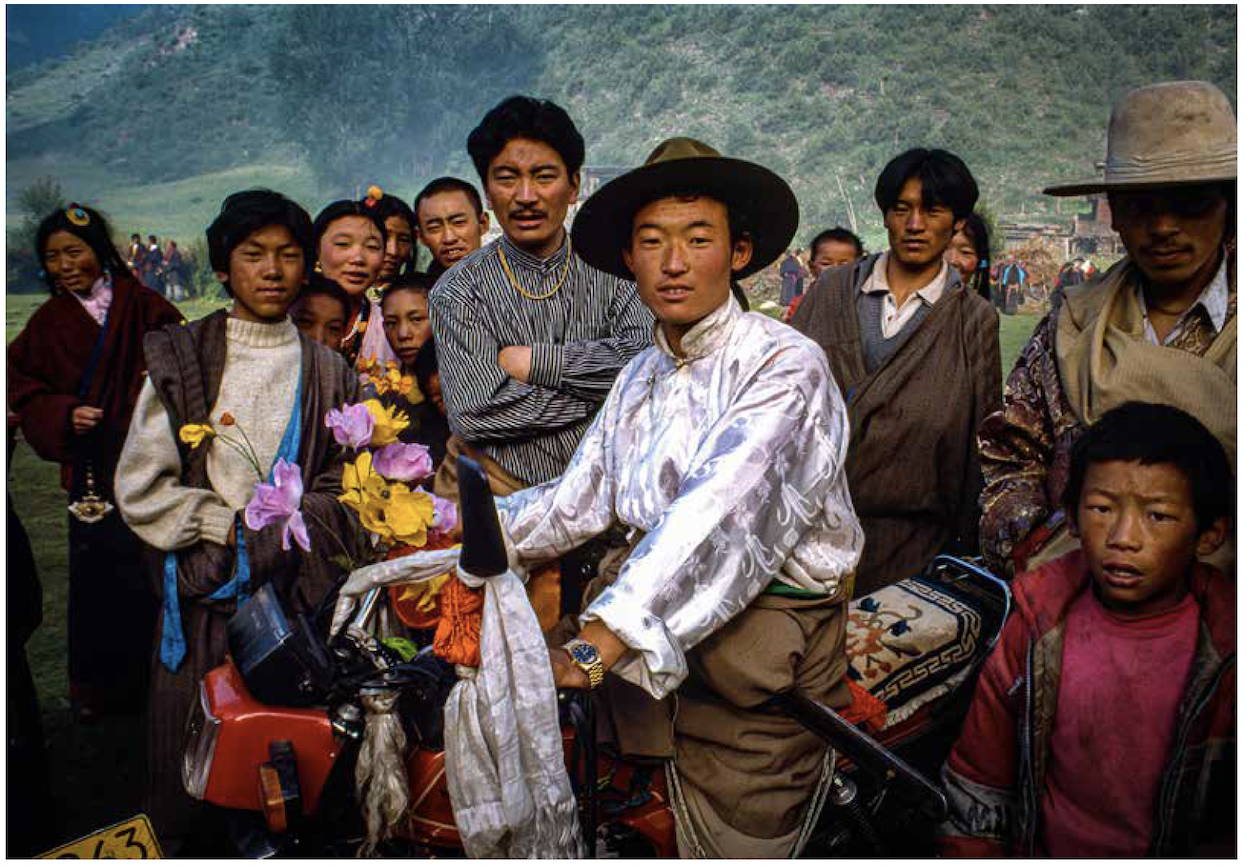Portraits of Tibet is a hugely evocative book for those of us who grew up on the Tibetan Plateau, and especially those who led a nomadic lifestyle. In bringing together images and recollections of the traditional Tibetan way of life at high altitude alongside some of the stark changes of the modern day, Diane has got under the skin of this unique culture, as well as the challenges and opportunities that emerge in the new era. The images are arresting and beautiful, but they also paint a picture that few other mediums can convey: this makes it a very important book. Portraits of Tibet has the potential to bring Tibetan culture and stories to a broad audience, and this is exciting as Tibet can struggle to be represented in mainstream media.
The book’s cover photo is well chosen – it tells us a lot about life at high altitude Tibet. You can feel the wild expanse of the Plateau through the nomad’s windswept hair. She carries bamboo – a precious resource that she has likely picked up on a pilgrimage: this will be fashioned into arrows and jars. Remnants of breakfast – roasted barley flour or tsampa, the traditional staple food, cling to her face.
Diane is a skilled portrait photographer, but for me it is the images of the Tibetan landscape that are particularly striking. Her pictures bring to life all the beauty of the Plateau – its wild flowers and great grassy expanses. The living is hard here, and Diane does not romanticise it, but it is clear that people are content about their daily tasks – milking their animals, making butter, preparing tea by the fireside – and you can feel the kindness of the young people towards the old, while the elders share their experience and knowledge, passing down vital time-worn skills.
But the book doesn’t focus merely on these ancient ways of life. Smokers jump out of the pages too, and there are hints of modernisation everywhere. For those of us who grew up living the nomadic way of life it is striking to see some of the changes that have taken place over the last couple of decades. Tibet has prospered, and wealth is on display here: Diane captures the Tibetans’ love of motorbikes, expensive watches, and so on.
And yet old skills die hard: while some ways of life have become obsolete, many age-old techniques are still being practiced – traditional medicines continue to be collected and used in Tibet, and Diane has photographed craftsmen skilled in the art of pottery and more. This is a great showcase for the wealth of talent that still exists here, even in harsh conditions, and against the shadow of extreme modernization.
Diane’s pictures are unique – they are wide-ranging, and include stunning landscapes, beautiful portraits, and intriguing snapshots of Tibetan cities, rural idylls and daily life. She clearly has a passion for this people and its culture, and she is a trusted companion both within the home and out on the grasslands. Her photographs have an intimacy that is rare to see. They are informal: Diane has gained trust.
For Tibetan people living outside of Tibet, the book is deeply moving. There is so much to remind us of home and of childhood, while the images of modern-day life in the cities give a clear sense of how things have changed. Many Tibetan people have never seen their homeland, and for them Portraits of Tibet provides a context that is rarely seen – a vital lens through which they and others will be better able to understand the culture and real-life experiences of its people.

Born and raised in rural Tibet, Yeshi Jampa grew up herding livestock on the high reaches of the Plateau. He learned to cook inside a yak hair tent at a young age.
Yeshi now lives in Oxford with his wife Julia and their children where they run Taste Tibet, an award winning restaurant serving traditional Tibetan food.
Yeshi and Julia have also filled a book with all their wonderful recipes, which you can find out more about below.






